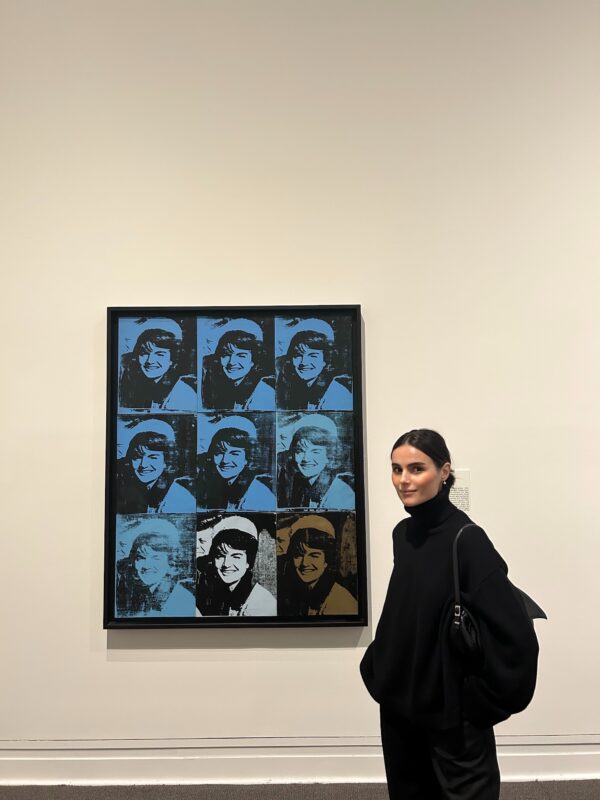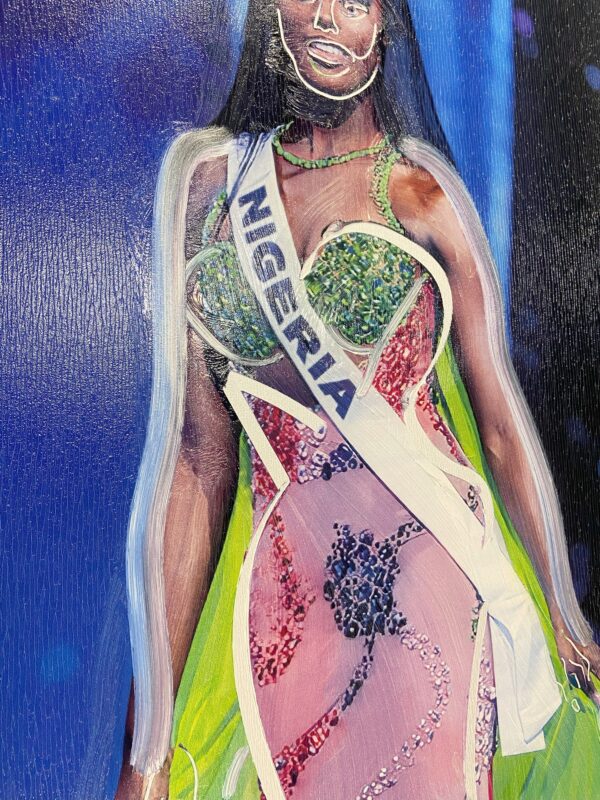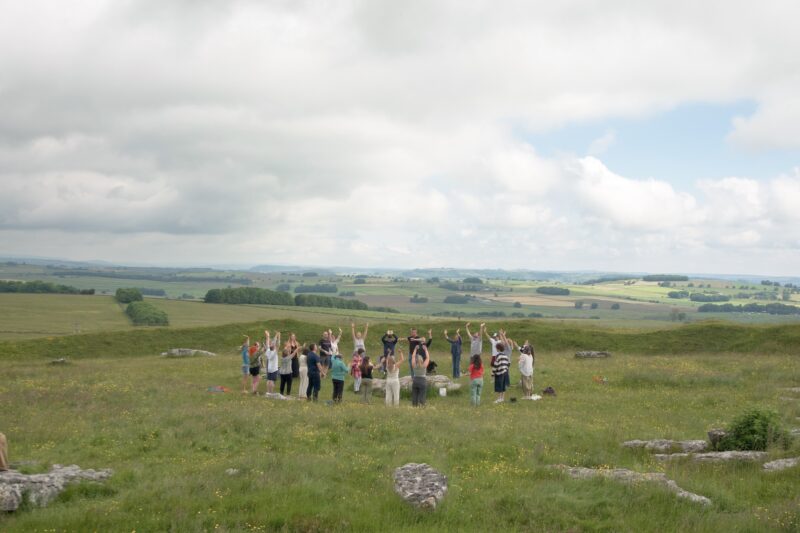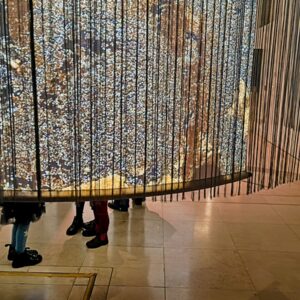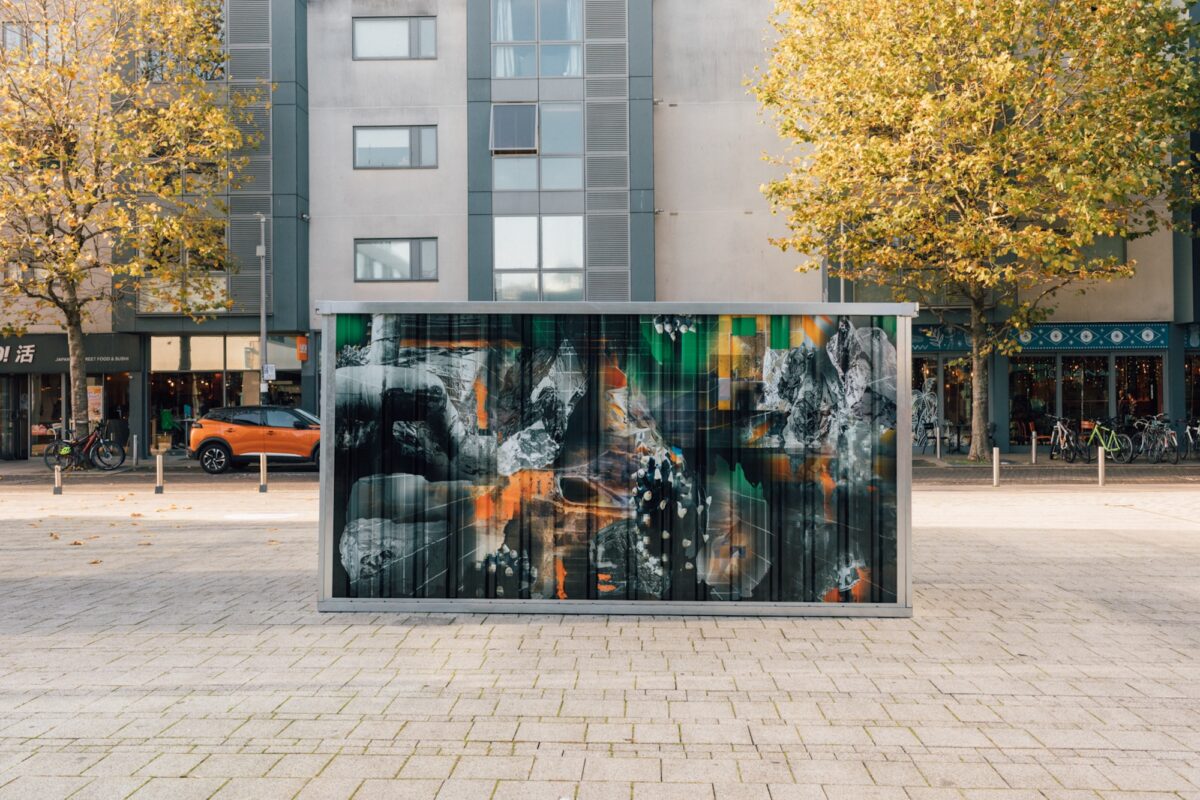
Last year in October (can’t believe it was that long ago!) we popped down to Brighton for the Photoworks Weekender. One of the most interesting projects on show was Variations by Felicity Hammond.
Staged in four venues across the UK, Variations by Felicity Hammond is an evolving installation exploring the relationship between geological mining and data mining, and image-making and machine learning.
The work we saw was the first chapter of the exhibition V1: Content Aware and it’s next up at QUAD in Derby as part of FORMAT International Photography Festival (opening on 13th March until 15th June 2025) and then Stills in Edinburgh and The Photographers Gallery across 2025 and 2026.
V1: Content Aware explored shipping containers as vessels of both raw materials and digital infrastructure. Assigned numbers like code, they cross the same waters that carry data through global communication cables. Stacked en masse, they resemble pixels, revealing the vast scale of extraction. Here, a pixelated mining landscape merges with digitality as a digitally produced image adheres directly to a container’s surface. More than a display, the container itself captures images (via cctv), extracting visual data from public space to inform future variations.
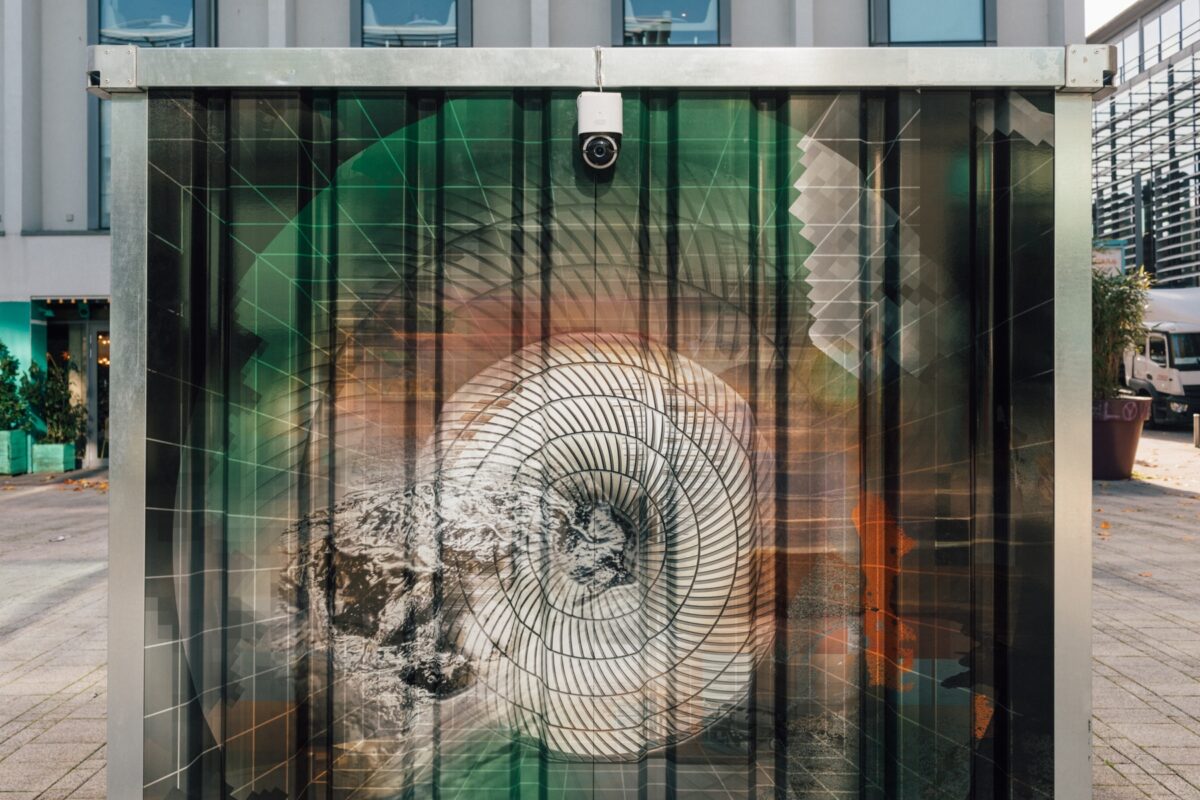
Continuing this exploration into data, AI & machine learning FAD asked Chat GPT to create some questions about the ongoing exhibition.
Variations explores the parallels between geological mining and data mining. What first inspired you to connect these two seemingly different extractive processes in your work?
I have been interested in the idea of the camera as an extractive tool for a while – particularly in relation to surveillance and the way in which data is mined – often without our knowledge. These terms – extraction and mining – of course also belong to the field of geology, and these processes are used to unearth the very materials that support photographic image making practices and our wider digital economy. I wanted to find a way to bring these processes together, where the camera and mining drill become one hybrid tool of extraction.
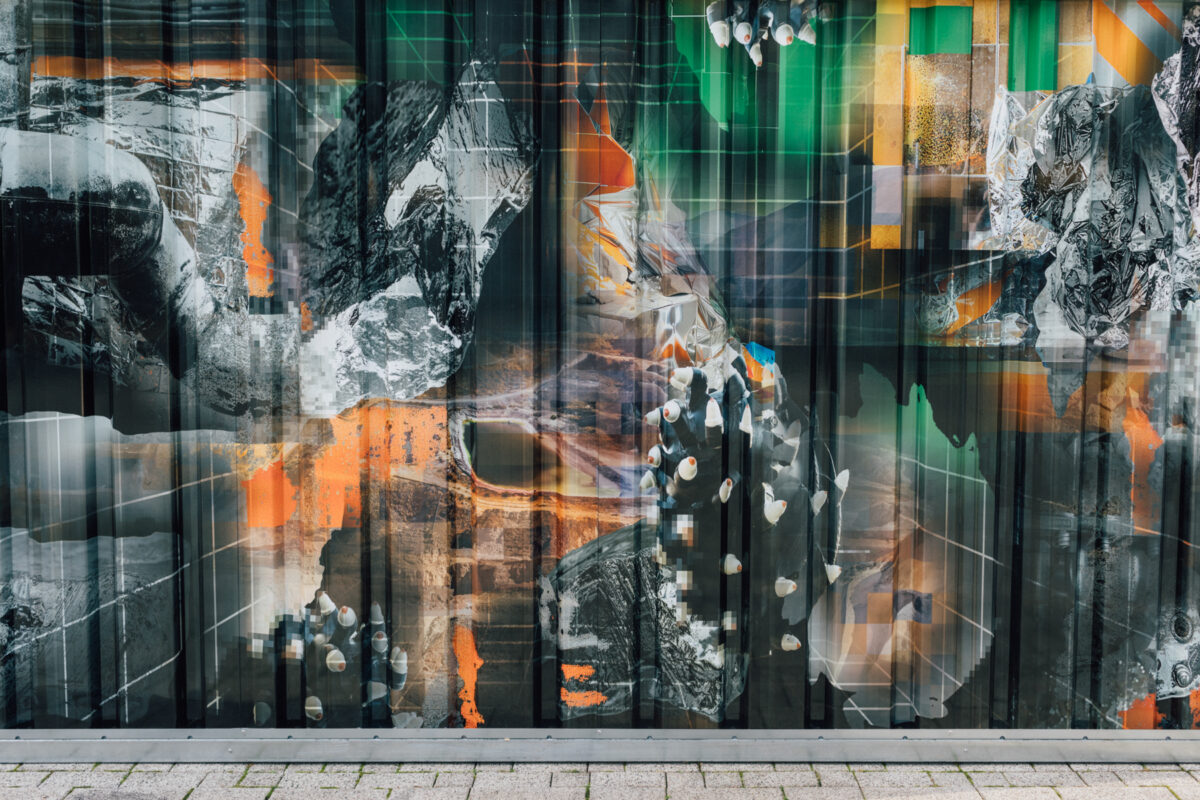
Each chapter of Variations builds on the previous one, using photographic documentation as a training set for the next exhibition. How do you see this evolving process mirroring the way machine learning itself develops over time?
Enacting the processes of machine learning tools through material exploration has become a key way for me to understand how generative AI functions. Rather than exploring machine learning within the limits set by its own technological infrastructure, I am mimicking the system in the material world that it both takes from and informs. Through this close examination, taking place through enacting the processes I am researching, I have come to understand more clearly the aesthetic of images made using generative AI, and the way that they operate in the world. As each exhibition generates the next – both through images and the ideas that they evoke – the works are able to reveal the processes of generative AI that usually remain opaque. Through enacting the processes materially, the glossy interface of the software dissolves. By the time this project reaches its third variation, titled V3: Model Collapse, the images will begin to fall apart. This is something that I am interested in seeing happen within this technology – as machine learning tools develop over time, might they reach a peak before their slow decline, as they begin to be fed by their own imagination?
In V2: Rigged, you highlight the exploitative processes behind AI-driven image-making. What role do you believe artists and photographers play in challenging the opacity of these technological systems?
Many artists and photographers are approaching generative tools with caution, aware that they may be probed about the excessive energy consumption that comes with each prompt, or the clear biases in the data sets that feed generative AI platforms. And artists should be cautious – machine learning tools rely on multiple levels of exploitation to function, from the underpaid workers exposed to harmful imagery when labelling data sets, to the communities affected by enormous data centres. To challenge these processes then, feels like a necessary part of an artistic methodology, if choosing to work with these technological systems. I am not suggesting that all artistic work should turn in on itself and solely refer to the technological infrastructures of the tools they are using, but the outcomes should at least aim to reflect on the broader role of this form of image-making within contemporary society, rather than attempting to use it as a purely representational tool. The relationship artists have with generative tools become more meaningful when they find out or reveal something about these tools and their impact on the world through using them.
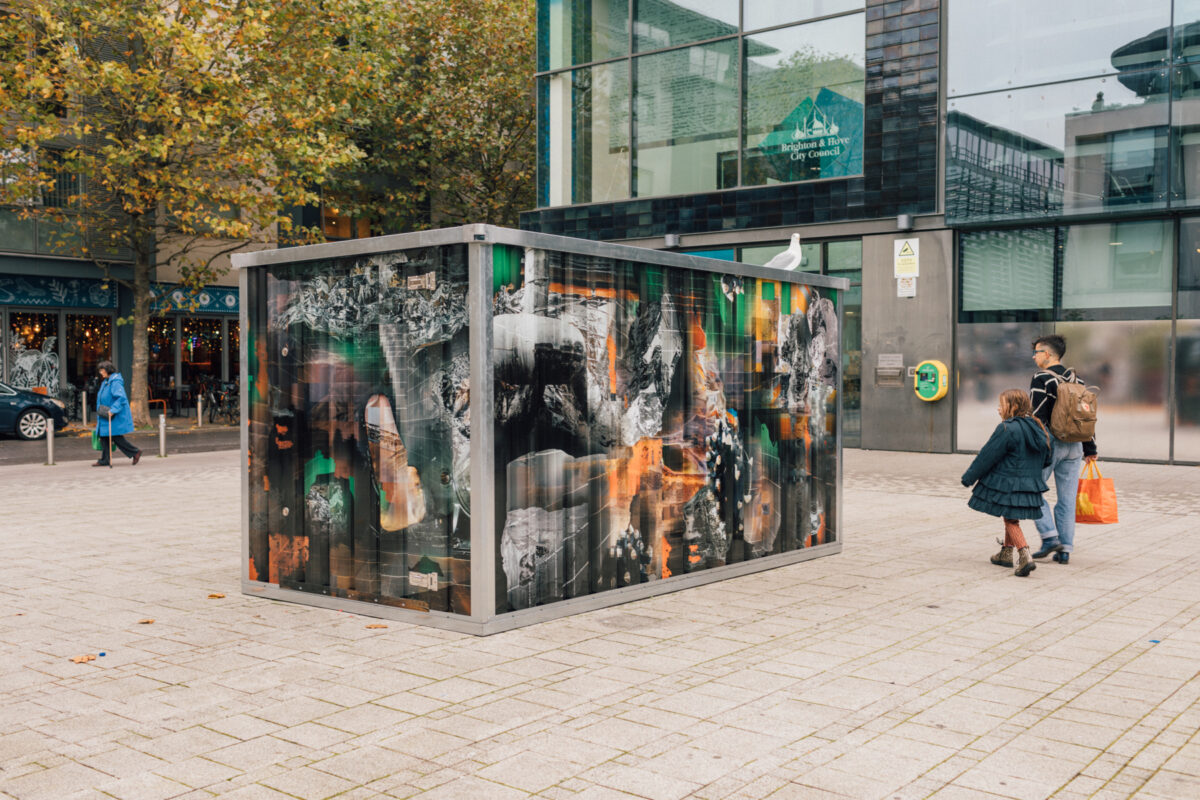
Your installations incorporate AI-generated imagery, surveillance, and documentation as both subject matter and method. How do you navigate the ethical considerations of using these same tools to critique them
In general, the works I am making for this project mimic the processes of generative AI rather than implementing them. However, there are particular moments within the methodology where it is necessary to use them, in order to formulate a critique. For example, after presenting the first variation of the project – V1: Content Aware – I processed all of the surveillance images to find the average image (or in reference to Hito Steyerl’s account of machine learning outputs), the mean image, of the photographic data. This involved generating a small number of images from a set of over 1000. The results were really quite unexpected. In these generated images, men hold hybrid machines; cameras as weapons. The outputs of the machine learning based image generator – produced using the surveillance imagery and documentation of V1 – reveal the violence of the contemporary camera from within its own system. I hope that though the limited engagement I have with this technology, I can impact the way that they are seen as image making tools, enabling audiences to formulate their own critical vantage point on our reliance on such harmful technologies.
V3: Model Collapse will address the idea of AI-generated data polluting its own reality. What do you hope audiences take away from this idea, and how do you envision the long-term impact of AI on photographic truth?
One of the key aims of this project is to unveil the ‘machine’ at the centre of generative AI image making tools, giving the audience an opportunity to reflect on the processes on which contemporary photographic media relies. In V2: Rigged, this takes place through creating a hybrid object that brings together the processes I have just mentioned. In V3: Model Collapse, the images made by the machine in the previous variation will be re-enacted and displayed, and it is at this point in the project where the use of photographic data and its interpretation and manipulation by the machine is questioned. In the central image for V3, a wall of mirrors is held up to the machine from V2, but the mirror is floored. The image it reflects falls apart, pixelated in real space. The other images of re-stagings and re-enactments of the exhibition that came before will be uncanny documentations – it is the exhibition, but not quite the exhibition. I hope audiences will reflect on this shift, acknowledging that AI has serious implications on the way that we read contemporary photographs. As for the long-term impact AI has on photographic truth: I am actually starting to think that since generative AI has become so prevalent, and used by so many, the language of photographic manipulation is shared by general users and audiences. As such, perhaps there is a greater understanding developing that photographic images are not really capable of truth telling – they never have been.
Felicity Hammond: Variations Exhibition March 13th, 2025 to June 15th, 2025, QUAD, Derby: INFO
Felicity Hammond: Variations Exhibition Tour March 15th, 2025, 1:00 pm to 2:00 pm, QUAD INFO
Part of FORMAT25, from 13th – 30th March 2025 formatfestival.com
All images Felicity Hammond – V1: Content Aware , image Anne Moffat / Photoworks (2024)
